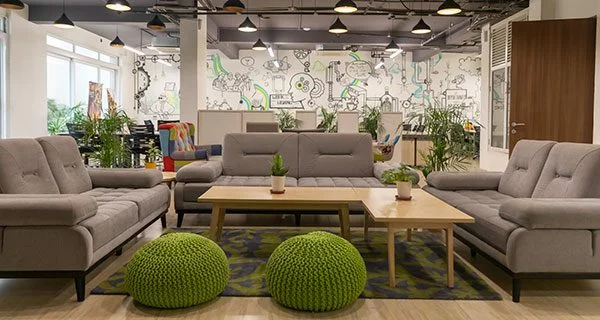Coworking spaces have already become a household name today and it’s believed to be one of the fastest growing industries in the world. In fact, the industry has grown by over 400% since 2010. Research shows that this type of working arrangement could lead to more productivity and fulfillment.
Coworking is here to stay, but what’s next? What changes can we expect to see in this booming industry? Here’s my take on how coworking spaces will evolve in the future:
Coworking Spaces are Attracting Big Companies
The trend of coworking spaces goes beyond just supporting small startups. Big companies are also getting involved in flex office spaces. Some are setting up their own co-office spaces, while others are partnering with existing coworking companies to provide space for their employees.
Why do big companies want to be involved? For one thing, it’s a cost-effective way of attracting young talent and helping them develop new skills outside of the corporate walls. It also helps them project an image of being innovative, socially conscious, and forward-thinking.
More focus on community will be a part of coworking
Coworking spaces are more than just a place to work. They are becoming communities. People want to feel like they belong to a community and flexible office spaces can provide that feeling, especially if the space is designed well.
Shared office spaces provide an opportunity for people to be around other like-minded individuals and provide a sense of belonging in a world where everyone seems so disconnected from each other. This trend will continue as more coworking spaces develop their own unique culture.
Simplicity and Affordability will be Key Drivers for Coworking Companies
In the future, coworking spaces will be judged based on their ability to provide a simple, affordable experience. Coworking companies will need to focus on flexibility and accessibility while still maintaining an inviting community environment.
This will attract all types of businesses such as:
- Freelancers looking for flexible co work spaces.
- Small businesses need office space without signing long-term leases or buying furniture upfront.
- Larger enterprises seek collaborative communities where people can share ideas.
People want Spaces that Reflect the Diversity of their work
As the needs of workers change, so do those of working spaces. Coworking spaces are becoming more flexible in their offerings and more focused on community. It’s no longer just about desks, coffee, and internet access: now you can find anything from private offices to event spaces and even shared work kitchenettes that facilitate collaboration through cooking together.
This shift towards flexibility has helped accommodate people who have multiple roles at a single company or who want to work remotely but still be connected to the office culture.
Coworking spaces will become more flexible in their offerings
Flexibility is the key when you rent a coworking space. Collaborative working must offer more than just office space and coffee. The flexible environment allows for greater diversity in workers, with those who need little or no supervision working alongside those who require more guidance. In an ideal world, a coworking space would be able to tailor its offerings based on the needs of the clients—and this is something that we see happening across the industry.
We have noticed an increased number of coworking spaces offering flexible hours as well as non-traditional work environments such as cafes or libraries. More importantly, we’ve seen them experimenting with payment options other than monthly membership fees. Some allow you to pay by the hour instead; some let you put down cash up front and then pay per month.
Millennial demands will keep Shaking things up in the Industry
Millennials make up a large portion of the workforce today and have a variety of different needs when it comes to working from home. This generation is more interested in the community than previous generations, so co-office spaces are meeting those needs by creating co-working models with lounges and amenities that can provide an opportunity for collaboration between coworkers.
Additionally, millennials are more likely to look for flexible work arrangements so they can spend time with their collogues or pursue other interests outside of work hours. Coworking spaces in Delhi offer this flexibility by allowing members access to office space during off-hours.
Conclusion
Shared office spaces in Gurgaon are also becoming more diverse in their offerings as they try to appeal to a wide range of users. This means paying attention to the future generation of workers. Coworking spaces are growing in popularity, and it’s important that the industry continues to expand and evolve with the changing needs of workers.
